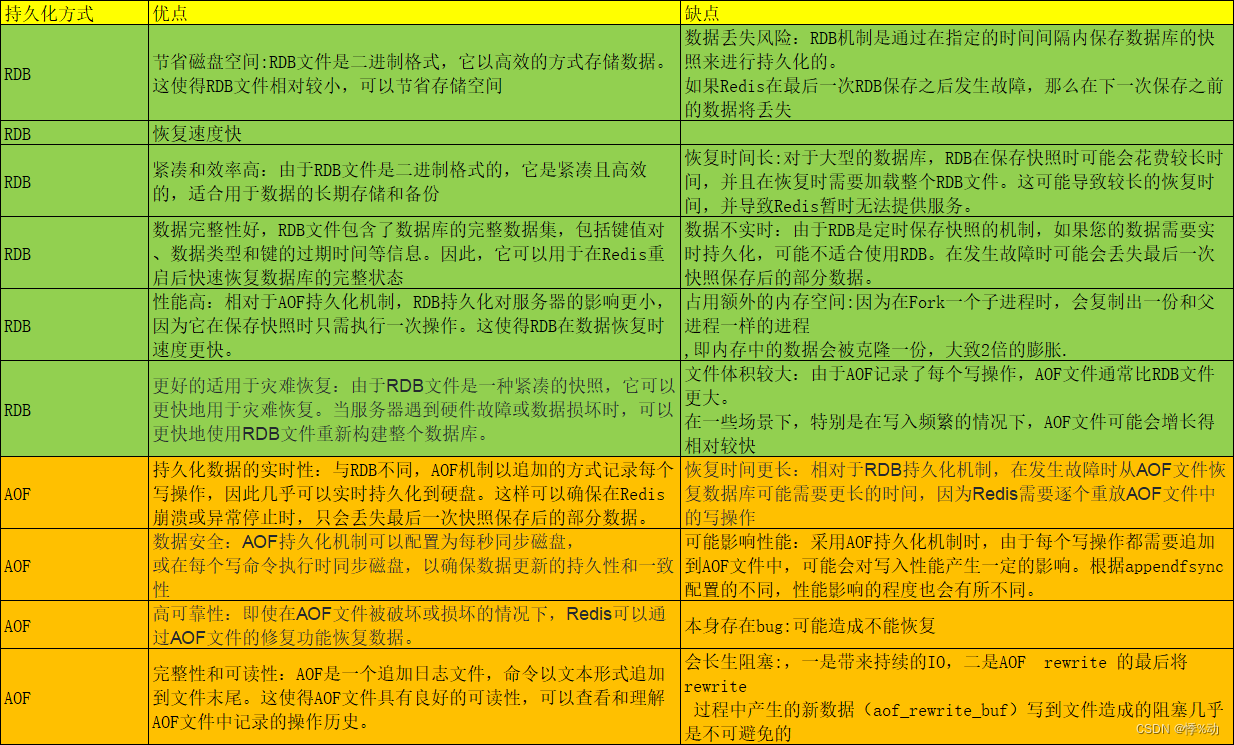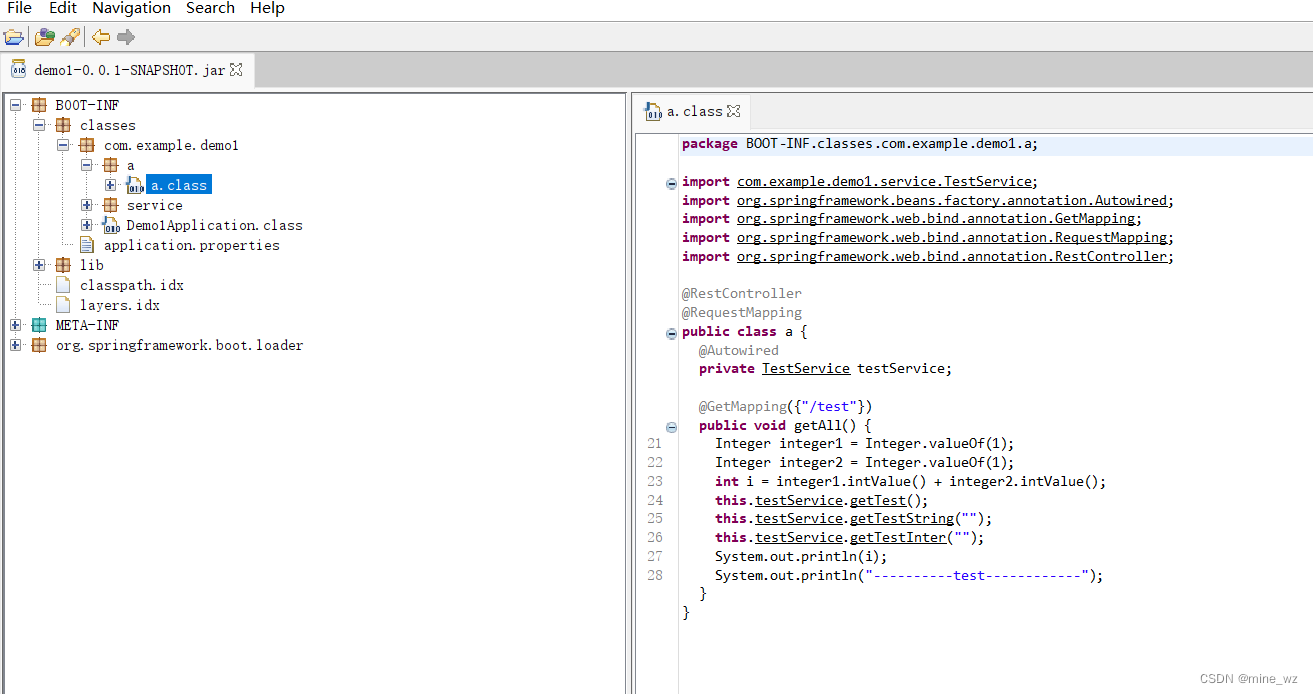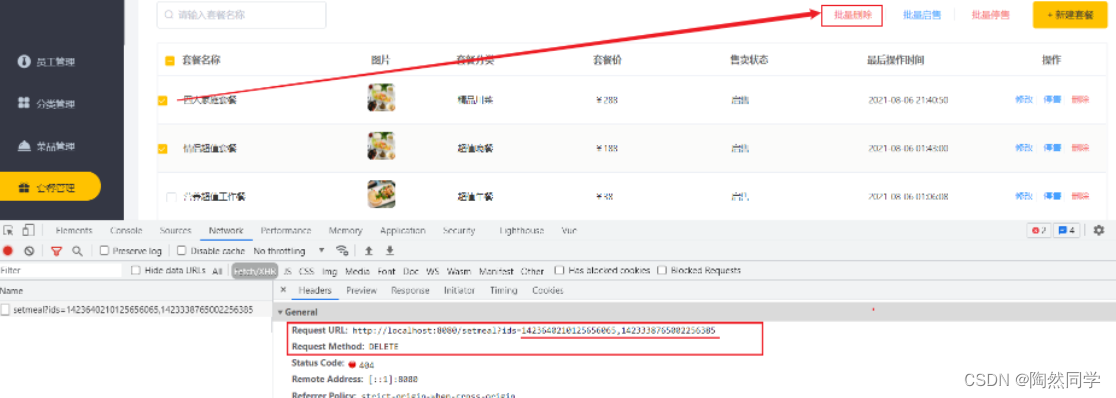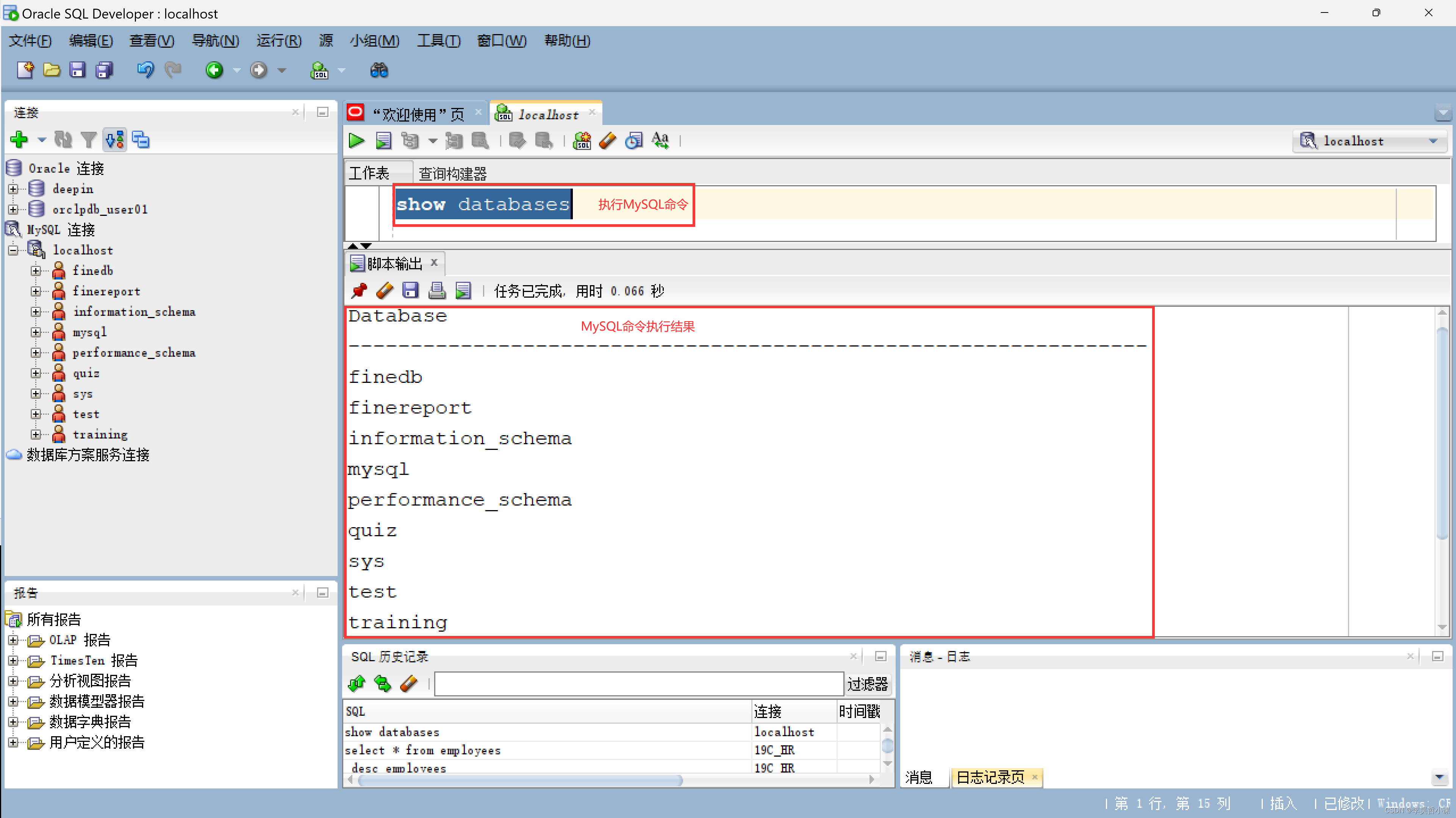目录
二、查看数据
三、选择
四、缺失值处理
五、相关操作
六、合并
七、分组
八、重塑(Reshaping)
九、时间序列
十、Categorical
十一、画图
十二、导入和保存数据
本文对十分钟入门Pandas进行翻译详见英文版https://pandas.pydata.org/pandas-docs/stable/getting_started/10min.html
习惯上,我们会按下面格式引入所需要的包:
In [1]: import pandas as pdIn [2]: import numpy as npIn [3]: import matplotlib.pyplot as plt一、创建对象
1、可以通过传递一个list对象来创建一个Series,pandas会默认创建整型索引:
In [4]: s = pd.Series([1,3,5,np.nan,6,8])In [5]: s
Out[5]:
0 1.0
1 3.0
2 5.0
3 NaN
4 6.0
5 8.0
dtype: float64
2、通过传递一个numpy array,时间索引以及列标签来创建一个DataFrame:
In [6]: dates = pd.date_range('20130101', periods=6)In [7]: dates
Out[7]:
DatetimeIndex(['2013-01-01', '2013-01-02', '2013-01-03', '2013-01-04','2013-01-05', '2013-01-06'],dtype='datetime64[ns]', freq='D')In [8]: df = pd.DataFrame(np.random.randn(6,4), index=dates, columns=list('ABCD'))In [9]: df
Out[9]: A B C D
2013-01-01 0.469112 -0.282863 -1.509059 -1.135632
2013-01-02 1.212112 -0.173215 0.119209 -1.044236
2013-01-03 -0.861849 -2.104569 -0.494929 1.071804
2013-01-04 0.721555 -0.706771 -1.039575 0.271860
2013-01-05 -0.424972 0.567020 0.276232 -1.087401
2013-01-06 -0.673690 0.113648 -1.478427 0.524988
3、通过传递一个能够被转换成类似序列结构的字典对象来创建一个DataFrame:
In [10]: df2 = pd.DataFrame({ 'A' : 1.,....: 'B' : pd.Timestamp('20130102'),....: 'C' : pd.Series(1,index=list(range(4)),dtype='float32'),....: 'D' : np.array([3] * 4,dtype='int32'),....: 'E' : pd.Categorical(["test","train","test","train"]),....: 'F' : 'foo' })....: In [11]: df2
Out[11]: A B C D E F
0 1.0 2013-01-02 1.0 3 test foo
1 1.0 2013-01-02 1.0 3 train foo
2 1.0 2013-01-02 1.0 3 test foo
3 1.0 2013-01-02 1.0 3 train foo
4、查看不同列的数据类型:
In [12]: df2.dtypes
Out[12]:
A float64
B datetime64[ns]
C float32
D int32
E category
F object
dtype: object
5、如果你使用的是IPython,使用Tab自动补全功能会自动识别所有的属性以及自定义的列,下图中是所有能够被自动识别的
属性的一个子集:
In [13]: df2.<TAB>
df2.A df2.boxplot
df2.abs df2.C
df2.add df2.clip
df2.add_prefix df2.clip_lower
df2.add_suffix df2.clip_upper
df2.align df2.columns
df2.all df2.combine
df2.any df2.combineAdd
df2.append df2.combine_first
df2.apply df2.combineMult
df2.applymap df2.compound
df2.as_blocks df2.consolidate
df2.asfreq df2.convert_objects
df2.as_matrix df2.copy
df2.astype df2.corr
df2.at df2.corrwith
df2.at_time df2.count
df2.axes df2.cov
df2.B df2.cummax
df2.between_time df2.cummin
df2.bfill df2.cumprod
df2.blocks df2.cumsum
df2.bool df2.D正如你所看到的,列A,B,C,D的标签自动生成,E的也是。而其余的属性已经做了简要的截断。
二、查看数据
1、 查看frame中头部和尾部的行:
In [14]: df.head()
Out[14]: A B C D
2013-01-01 0.469112 -0.282863 -1.509059 -1.135632
2013-01-02 1.212112 -0.173215 0.119209 -1.044236
2013-01-03 -0.861849 -2.104569 -0.494929 1.071804
2013-01-04 0.721555 -0.706771 -1.039575 0.271860
2013-01-05 -0.424972 0.567020 0.276232 -1.087401In [15]: df.tail(3)
Out[15]: A B C D
2013-01-04 0.721555 -0.706771 -1.039575 0.271860
2013-01-05 -0.424972 0.567020 0.276232 -1.087401
2013-01-06 -0.673690 0.113648 -1.478427 0.524988
2、 显示索引、列和底层的numpy数据:
In [16]: df.index
Out[16]:
DatetimeIndex(['2013-01-01', '2013-01-02', '2013-01-03', '2013-01-04','2013-01-05', '2013-01-06'],dtype='datetime64[ns]', freq='D')In [17]: df.columns
Out[17]: Index([u'A', u'B', u'C', u'D'], dtype='object')In [18]: df.values
Out[18]:
array([[ 0.4691, -0.2829, -1.5091, -1.1356],[ 1.2121, -0.1732, 0.1192, -1.0442],[-0.8618, -2.1046, -0.4949, 1.0718],[ 0.7216, -0.7068, -1.0396, 0.2719],[-0.425 , 0.567 , 0.2762, -1.0874],[-0.6737, 0.1136, -1.4784, 0.525 ]])
3、 describe()函数对于数据的快速统计汇总:
In [19]: df.describe()
Out[19]: A B C D
count 6.000000 6.000000 6.000000 6.000000
mean 0.073711 -0.431125 -0.687758 -0.233103
std 0.843157 0.922818 0.779887 0.973118
min -0.861849 -2.104569 -1.509059 -1.135632
25% -0.611510 -0.600794 -1.368714 -1.076610
50% 0.022070 -0.228039 -0.767252 -0.386188
75% 0.658444 0.041933 -0.034326 0.461706
max 1.212112 0.567020 0.276232 1.071804
4、 对数据的转置:
In [20]: df.T
Out[20]: 2013-01-01 2013-01-02 2013-01-03 2013-01-04 2013-01-05 2013-01-06
A 0.469112 1.212112 -0.861849 0.721555 -0.424972 -0.673690
B -0.282863 -0.173215 -2.104569 -0.706771 0.567020 0.113648
C -1.509059 0.119209 -0.494929 -1.039575 0.276232 -1.478427
D -1.135632 -1.044236 1.071804 0.271860 -1.087401 0.524988
5、 按轴进行排序
In [21]: df.sort_index(axis=1, ascending=False)
Out[21]: D C B A
2013-01-01 -1.135632 -1.509059 -0.282863 0.469112
2013-01-02 -1.044236 0.119209 -0.173215 1.212112
2013-01-03 1.071804 -0.494929 -2.104569 -0.861849
2013-01-04 0.271860 -1.039575 -0.706771 0.721555
2013-01-05 -1.087401 0.276232 0.567020 -0.424972
2013-01-06 0.524988 -1.478427 0.113648 -0.673690
6、 按值进行排序
In [22]: df.sort_values(by='B')
Out[22]: A B C D
2013-01-03 -0.861849 -2.104569 -0.494929 1.071804
2013-01-04 0.721555 -0.706771 -1.039575 0.271860
2013-01-01 0.469112 -0.282863 -1.509059 -1.135632
2013-01-02 1.212112 -0.173215 0.119209 -1.044236
2013-01-06 -0.673690 0.113648 -1.478427 0.524988
2013-01-05 -0.424972 0.567020 0.276232 -1.087401三、选择
虽然标准的Python/Numpy的选择和设置表达式都能够直接派上用场,但是作为工程使用的代码,我们推荐使用经过优化的pandas数据访问方式: .at, .iat, .loc, .iloc 和 .ix
l 获取
1、 选择一个单独的列,这将会返回一个Series,等同于df.A:
In [23]: df['A']
Out[23]:
2013-01-01 0.469112
2013-01-02 1.212112
2013-01-03 -0.861849
2013-01-04 0.721555
2013-01-05 -0.424972
2013-01-06 -0.673690
Freq: D, Name: A, dtype: float64
2、 通过[]进行选择,这将会对行进行切片
In [24]: df[0:3]
Out[24]: A B C D
2013-01-01 0.469112 -0.282863 -1.509059 -1.135632
2013-01-02 1.212112 -0.173215 0.119209 -1.044236
2013-01-03 -0.861849 -2.104569 -0.494929 1.071804In [25]: df['20130102':'20130104']
Out[25]: A B C D
2013-01-02 1.212112 -0.173215 0.119209 -1.044236
2013-01-03 -0.861849 -2.104569 -0.494929 1.071804
2013-01-04 0.721555 -0.706771 -1.039575 0.271860l 通过标签选择
1、 使用标签来获取一个交叉的区域
In [26]: df.loc[dates[0]]
Out[26]:
A 0.469112
B -0.282863
C -1.509059
D -1.135632
Name: 2013-01-01 00:00:00, dtype: float64
2、 通过标签来在多个轴上进行选择
In [27]: df.loc[:,['A','B']]
Out[27]: A B
2013-01-01 0.469112 -0.282863
2013-01-02 1.212112 -0.173215
2013-01-03 -0.861849 -2.104569
2013-01-04 0.721555 -0.706771
2013-01-05 -0.424972 0.567020
2013-01-06 -0.673690 0.113648
3、 标签切片
In [28]: df.loc['20130102':'20130104',['A','B']]
Out[28]: A B
2013-01-02 1.212112 -0.173215
2013-01-03 -0.861849 -2.104569
2013-01-04 0.721555 -0.706771
4、 对于返回的对象进行维度缩减
In [29]: df.loc['20130102',['A','B']]
Out[29]:
A 1.212112
B -0.173215
Name: 2013-01-02 00:00:00, dtype: float64
5、 获取一个标量
In [30]: df.loc[dates[0],'A']
Out[30]: 0.46911229990718628
6、 快速访问一个标量(与上一个方法等价)
In [31]: df.at[dates[0],'A']
Out[31]: 0.46911229990718628l 通过位置选择
1、 通过传递数值进行位置选择(选择的是行)
In [32]: df.iloc[3]
Out[32]:
A 0.721555
B -0.706771
C -1.039575
D 0.271860
Name: 2013-01-04 00:00:00, dtype: float64
2、 通过数值进行切片,与numpy/python中的情况类似
In [33]: df.iloc[3:5,0:2]
Out[33]: A B
2013-01-04 0.721555 -0.706771
2013-01-05 -0.424972 0.567020
3、 通过指定一个位置的列表,与numpy/python中的情况类似
In [34]: df.iloc[[1,2,4],[0,2]]
Out[34]: A C
2013-01-02 1.212112 0.119209
2013-01-03 -0.861849 -0.494929
2013-01-05 -0.424972 0.276232
4、 对行进行切片
In [35]: df.iloc[1:3,:]
Out[35]: A B C D
2013-01-02 1.212112 -0.173215 0.119209 -1.044236
2013-01-03 -0.861849 -2.104569 -0.494929 1.071804
5、 对列进行切片
In [36]: df.iloc[:,1:3]
Out[36]: B C
2013-01-01 -0.282863 -1.509059
2013-01-02 -0.173215 0.119209
2013-01-03 -2.104569 -0.494929
2013-01-04 -0.706771 -1.039575
2013-01-05 0.567020 0.276232
2013-01-06 0.113648 -1.478427
6、 获取特定的值
In [37]: df.iloc[1,1]
Out[37]: -0.17321464905330858获得快速访问的一个标量(等同于以前的做法)
In [38]: df.iat[1,1]
Out[38]: -0.17321464905330858l 布尔索引
1、 使用一个单独列的值来选择数据:
In [39]: df[df.A > 0]
Out[39]: A B C D
2013-01-01 0.469112 -0.282863 -1.509059 -1.135632
2013-01-02 1.212112 -0.173215 0.119209 -1.044236
2013-01-04 0.721555 -0.706771 -1.039575 0.271860
2、 使用where操作来选择数据:
In [40]: df[df > 0]
Out[40]: A B C D
2013-01-01 0.469112 NaN NaN NaN
2013-01-02 1.212112 NaN 0.119209 NaN
2013-01-03 NaN NaN NaN 1.071804
2013-01-04 0.721555 NaN NaN 0.271860
2013-01-05 NaN 0.567020 0.276232 NaN
2013-01-06 NaN 0.113648 NaN 0.524988
3、 使用isin()方法来过滤:
In [41]: df2 = df.copy()In [42]: df2['E'] = ['one', 'one','two','three','four','three']In [43]: df2
Out[43]: A B C D E
2013-01-01 0.469112 -0.282863 -1.509059 -1.135632 one
2013-01-02 1.212112 -0.173215 0.119209 -1.044236 one
2013-01-03 -0.861849 -2.104569 -0.494929 1.071804 two
2013-01-04 0.721555 -0.706771 -1.039575 0.271860 three
2013-01-05 -0.424972 0.567020 0.276232 -1.087401 four
2013-01-06 -0.673690 0.113648 -1.478427 0.524988 threeIn [44]: df2[df2['E'].isin(['two','four'])]
Out[44]: A B C D E
2013-01-03 -0.861849 -2.104569 -0.494929 1.071804 two
2013-01-05 -0.424972 0.567020 0.276232 -1.087401 fourl 设置
1、 设置一个新的列:
In [45]: s1 = pd.Series([1,2,3,4,5,6], index=pd.date_range('20130102', periods=6))In [46]: s1
Out[46]:
2013-01-02 1
2013-01-03 2
2013-01-04 3
2013-01-05 4
2013-01-06 5
2013-01-07 6
Freq: D, dtype: int64In [47]: df['F'] = s1
2、 通过标签设置新的值:
In [48]: df.at[dates[0],'A'] = 0
3、 通过位置设置新的值:
In [49]: df.iat[0,1] = 0
4、 通过一个numpy数组设置一组新值:
In [50]: df.loc[:,'D'] = np.array([5] * len(df))上述操作结果如下:
In [51]: df
Out[51]: A B C D F
2013-01-01 0.000000 0.000000 -1.509059 5 NaN
2013-01-02 1.212112 -0.173215 0.119209 5 1.0
2013-01-03 -0.861849 -2.104569 -0.494929 5 2.0
2013-01-04 0.721555 -0.706771 -1.039575 5 3.0
2013-01-05 -0.424972 0.567020 0.276232 5 4.0
2013-01-06 -0.673690 0.113648 -1.478427 5 5.05、 通过where操作来设置新的值:
In [52]: df2 = df.copy()In [53]: df2[df2 > 0] = -df2In [54]: df2
Out[54]: A B C D F
2013-01-01 0.000000 0.000000 -1.509059 -5 NaN
2013-01-02 -1.212112 -0.173215 -0.119209 -5 -1.0
2013-01-03 -0.861849 -2.104569 -0.494929 -5 -2.0
2013-01-04 -0.721555 -0.706771 -1.039575 -5 -3.0
2013-01-05 -0.424972 -0.567020 -0.276232 -5 -4.0
2013-01-06 -0.673690 -0.113648 -1.478427 -5 -5.0四、缺失值处理
在pandas中,使用np.nan来代替缺失值,这些值将默认不会包含在计算中。
1、 reindex()方法可以对指定轴上的索引进行改变/增加/删除操作,这将返回原始数据的一个拷贝:
In [55]: df1 = df.reindex(index=dates[0:4], columns=list(df.columns) + ['E'])In [56]: df1.loc[dates[0]:dates[1],'E'] = 1In [57]: df1
Out[57]: A B C D F E
2013-01-01 0.000000 0.000000 -1.509059 5 NaN 1.0
2013-01-02 1.212112 -0.173215 0.119209 5 1.0 1.0
2013-01-03 -0.861849 -2.104569 -0.494929 5 2.0 NaN
2013-01-04 0.721555 -0.706771 -1.039575 5 3.0 NaN
2、 去掉包含缺失值的行:
In [58]: df1.dropna(how='any')
Out[58]: A B C D F E
2013-01-02 1.212112 -0.173215 0.119209 5 1.0 1.0
3、 对缺失值进行填充:
In [59]: df1.fillna(value=5)
Out[59]: A B C D F E
2013-01-01 0.000000 0.000000 -1.509059 5 5.0 1.0
2013-01-02 1.212112 -0.173215 0.119209 5 1.0 1.0
2013-01-03 -0.861849 -2.104569 -0.494929 5 2.0 5.0
2013-01-04 0.721555 -0.706771 -1.039575 5 3.0 5.0
4、 对数据进行布尔填充:
In [60]: pd.isnull(df1)
Out[60]: A B C D F E
2013-01-01 False False False False True False
2013-01-02 False False False False False False
2013-01-03 False False False False False True
2013-01-04 False False False False False True
五、相关操作
l 统计(相关操作通常情况下不包括缺失值)
1、 执行描述性统计:
In [61]: df.mean()
Out[61]:
A -0.004474
B -0.383981
C -0.687758
D 5.000000
F 3.000000
dtype: float64
2、 在其他轴上进行相同的操作:
In [62]: df.mean(1)
Out[62]:
2013-01-01 0.872735
2013-01-02 1.431621
2013-01-03 0.707731
2013-01-04 1.395042
2013-01-05 1.883656
2013-01-06 1.592306
Freq: D, dtype: float64
3、 对于拥有不同维度,需要对齐的对象进行操作。Pandas会自动的沿着指定的维度进行广播:
In [63]: s = pd.Series([1,3,5,np.nan,6,8], index=dates).shift(2)In [64]: s
Out[64]:
2013-01-01 NaN
2013-01-02 NaN
2013-01-03 1.0
2013-01-04 3.0
2013-01-05 5.0
2013-01-06 NaN
Freq: D, dtype: float64In [65]: df.sub(s, axis='index')
Out[65]: A B C D F
2013-01-01 NaN NaN NaN NaN NaN
2013-01-02 NaN NaN NaN NaN NaN
2013-01-03 -1.861849 -3.104569 -1.494929 4.0 1.0
2013-01-04 -2.278445 -3.706771 -4.039575 2.0 0.0
2013-01-05 -5.424972 -4.432980 -4.723768 0.0 -1.0
2013-01-06 NaN NaN NaN NaN NaN
l Apply
1、 对数据应用函数:
In [66]: df.apply(np.cumsum)
Out[66]: A B C D F
2013-01-01 0.000000 0.000000 -1.509059 5 NaN
2013-01-02 1.212112 -0.173215 -1.389850 10 1.0
2013-01-03 0.350263 -2.277784 -1.884779 15 3.0
2013-01-04 1.071818 -2.984555 -2.924354 20 6.0
2013-01-05 0.646846 -2.417535 -2.648122 25 10.0
2013-01-06 -0.026844 -2.303886 -4.126549 30 15.0In [67]: df.apply(lambda x: x.max() - x.min())
Out[67]:
A 2.073961
B 2.671590
C 1.785291
D 0.000000
F 4.000000
dtype: float64l 直方图
1、直方图
In [68]: s = pd.Series(np.random.randint(0, 7, size=10))In [69]: s
Out[69]:
0 4
1 2
2 1
3 2
4 6
5 4
6 4
7 6
8 4
9 4
dtype: int64In [70]: s.value_counts()
Out[70]:
4 5
6 2
2 2
1 1
dtype: int64
l 字符串方法
Series对象在其str属性中配备了一组字符串处理方法,可以很容易的应用到数组中的每个元素,如下段代码所示。
In [71]: s = pd.Series(['A', 'B', 'C', 'Aaba', 'Baca', np.nan, 'CABA', 'dog', 'cat'])In [72]: s.str.lower()
Out[72]:
0 a
1 b
2 c
3 aaba
4 baca
5 NaN
6 caba
7 dog
8 cat
dtype: object
六、合并
Pandas提供了大量的方法能够轻松的对Series,DataFrame和Panel对象进行各种符合各种逻辑关系的合并操作。
l Concat
In [73]: df = pd.DataFrame(np.random.randn(10, 4))In [74]: df
Out[74]: 0 1 2 3
0 -0.548702 1.467327 -1.015962 -0.483075
1 1.637550 -1.217659 -0.291519 -1.745505
2 -0.263952 0.991460 -0.919069 0.266046
3 -0.709661 1.669052 1.037882 -1.705775
4 -0.919854 -0.042379 1.247642 -0.009920
5 0.290213 0.495767 0.362949 1.548106
6 -1.131345 -0.089329 0.337863 -0.945867
7 -0.932132 1.956030 0.017587 -0.016692
8 -0.575247 0.254161 -1.143704 0.215897
9 1.193555 -0.077118 -0.408530 -0.862495# break it into pieces
In [75]: pieces = [df[:3], df[3:7], df[7:]]In [76]: pd.concat(pieces)
Out[76]: 0 1 2 3
0 -0.548702 1.467327 -1.015962 -0.483075
1 1.637550 -1.217659 -0.291519 -1.745505
2 -0.263952 0.991460 -0.919069 0.266046
3 -0.709661 1.669052 1.037882 -1.705775
4 -0.919854 -0.042379 1.247642 -0.009920
5 0.290213 0.495767 0.362949 1.548106
6 -1.131345 -0.089329 0.337863 -0.945867
7 -0.932132 1.956030 0.017587 -0.016692
8 -0.575247 0.254161 -1.143704 0.215897
9 1.193555 -0.077118 -0.408530 -0.862495
l Join 类似于SQL类型的合并
In [77]: left = pd.DataFrame({'key': ['foo', 'foo'], 'lval': [1, 2]})In [78]: right = pd.DataFrame({'key': ['foo', 'foo'], 'rval': [4, 5]})In [79]: left
Out[79]: key lval
0 foo 1
1 foo 2In [80]: right
Out[80]: key rval
0 foo 4
1 foo 5In [81]: pd.merge(left, right, on='key')
Out[81]: key lval rval
0 foo 1 4
1 foo 1 5
2 foo 2 4
3 foo 2 5
l Append 将一行连接到一个DataFrame上
In [82]: df = pd.DataFrame(np.random.randn(8, 4), columns=['A','B','C','D'])In [83]: df
Out[83]: A B C D
0 1.346061 1.511763 1.627081 -0.990582
1 -0.441652 1.211526 0.268520 0.024580
2 -1.577585 0.396823 -0.105381 -0.532532
3 1.453749 1.208843 -0.080952 -0.264610
4 -0.727965 -0.589346 0.339969 -0.693205
5 -0.339355 0.593616 0.884345 1.591431
6 0.141809 0.220390 0.435589 0.192451
7 -0.096701 0.803351 1.715071 -0.708758In [84]: s = df.iloc[3]In [85]: df.append(s, ignore_index=True)
Out[85]: A B C D
0 1.346061 1.511763 1.627081 -0.990582
1 -0.441652 1.211526 0.268520 0.024580
2 -1.577585 0.396823 -0.105381 -0.532532
3 1.453749 1.208843 -0.080952 -0.264610
4 -0.727965 -0.589346 0.339969 -0.693205
5 -0.339355 0.593616 0.884345 1.591431
6 0.141809 0.220390 0.435589 0.192451
7 -0.096701 0.803351 1.715071 -0.708758
8 1.453749 1.208843 -0.080952 -0.264610
七、分组
对于”group by”操作,我们通常是指以下一个或多个操作步骤:
l (Splitting)按照一些规则将数据分为不同的组;
l (Applying)对于每组数据分别执行一个函数;
l (Combining)将结果组合到一个数据结构中;
In [86]: df = pd.DataFrame({'A' : ['foo', 'bar', 'foo', 'bar',....: 'foo', 'bar', 'foo', 'foo'],....: 'B' : ['one', 'one', 'two', 'three',....: 'two', 'two', 'one', 'three'],....: 'C' : np.random.randn(8),....: 'D' : np.random.randn(8)})....: In [87]: df
Out[87]: A B C D
0 foo one -1.202872 -0.055224
1 bar one -1.814470 2.395985
2 foo two 1.018601 1.552825
3 bar three -0.595447 0.166599
4 foo two 1.395433 0.047609
5 bar two -0.392670 -0.136473
6 foo one 0.007207 -0.561757
7 foo three 1.928123 -1.623033
1、 分组并对每个分组执行sum函数:
In [88]: df.groupby('A').sum()
Out[88]: C D
A
bar -2.802588 2.42611
foo 3.146492 -0.63958
2、 通过多个列进行分组形成一个层次索引,然后执行函数:
In [89]: df.groupby(['A','B']).sum()
Out[89]: C D
A B
bar one -1.814470 2.395985three -0.595447 0.166599two -0.392670 -0.136473
foo one -1.195665 -0.616981three 1.928123 -1.623033two 2.414034 1.600434
八、重塑(Reshaping)
l Stack
In [90]: tuples = list(zip(*[['bar', 'bar', 'baz', 'baz',....: 'foo', 'foo', 'qux', 'qux'],....: ['one', 'two', 'one', 'two',....: 'one', 'two', 'one', 'two']]))....: In [91]: index = pd.MultiIndex.from_tuples(tuples, names=['first', 'second'])In [92]: df = pd.DataFrame(np.random.randn(8, 2), index=index, columns=['A', 'B'])In [93]: df2 = df[:4]In [94]: df2
Out[94]: A B
first second
bar one 0.029399 -0.542108two 0.282696 -0.087302
baz one -1.575170 1.771208two 0.816482 1.100230
stack()方法在DataFrame列的层次上压缩
In [95]: stacked = df2.stack()In [96]: stacked
Out[96]:
first second
bar one A 0.029399B -0.542108two A 0.282696B -0.087302
baz one A -1.575170B 1.771208two A 0.816482B 1.100230
dtype: float64整合DataFrame或者Series(MultiIndex作为索引),stack()的逆运算是isunstack(),默认情况下unStack上一次的情况。
In [97]: stacked.unstack()
Out[97]: A B
first second
bar one 0.029399 -0.542108two 0.282696 -0.087302
baz one -1.575170 1.771208two 0.816482 1.100230In [98]: stacked.unstack(1)
Out[98]:
second one two
first
bar A 0.029399 0.282696B -0.542108 -0.087302
baz A -1.575170 0.816482B 1.771208 1.100230In [99]: stacked.unstack(0)
Out[99]:
first bar baz
second
one A 0.029399 -1.575170B -0.542108 1.771208
two A 0.282696 0.816482B -0.087302 1.100230
l 数据透视表
In [100]: df = pd.DataFrame({'A' : ['one', 'one', 'two', 'three'] * 3,.....: 'B' : ['A', 'B', 'C'] * 4,.....: 'C' : ['foo', 'foo', 'foo', 'bar', 'bar', 'bar'] * 2,.....: 'D' : np.random.randn(12),.....: 'E' : np.random.randn(12)}).....: In [101]: df
Out[101]: A B C D E
0 one A foo 1.418757 -0.179666
1 one B foo -1.879024 1.291836
2 two C foo 0.536826 -0.009614
3 three A bar 1.006160 0.392149
4 one B bar -0.029716 0.264599
5 one C bar -1.146178 -0.057409
6 two A foo 0.100900 -1.425638
7 three B foo -1.035018 1.024098
8 one C foo 0.314665 -0.106062
9 one A bar -0.773723 1.824375
10 two B bar -1.170653 0.595974
11 three C bar 0.648740 1.167115
可以从这个数据中轻松的生成数据透视表:
In [102]: pd.pivot_table(df, values='D', index=['A', 'B'], columns=['C'])
Out[102]:
C bar foo
A B
one A -0.773723 1.418757B -0.029716 -1.879024C -1.146178 0.314665
three A 1.006160 NaNB NaN -1.035018C 0.648740 NaN
two A NaN 0.100900B -1.170653 NaNC NaN 0.536826
九、时间序列
Pandas在对频率转换进行重新采样时拥有简单、强大且高效的功能(如将按秒采样的数据转换为按5分钟为单位进行采样的数据)。这种操作在金融领域非常常见。
In [103]: rng = pd.date_range('1/1/2012', periods=100, freq='S')In [104]: ts = pd.Series(np.random.randint(0, 500, len(rng)), index=rng)In [105]: ts.resample('5Min').sum()
Out[105]:
2012-01-01 25083
Freq: 5T, dtype: int64
1、 时区表示:
In [106]: rng = pd.date_range('3/6/2012 00:00', periods=5, freq='D')In [107]: ts = pd.Series(np.random.randn(len(rng)), rng)In [108]: ts
Out[108]:
2012-03-06 0.464000
2012-03-07 0.227371
2012-03-08 -0.496922
2012-03-09 0.306389
2012-03-10 -2.290613
Freq: D, dtype: float64In [109]: ts_utc = ts.tz_localize('UTC')In [110]: ts_utc
Out[110]:
2012-03-06 00:00:00+00:00 0.464000
2012-03-07 00:00:00+00:00 0.227371
2012-03-08 00:00:00+00:00 -0.496922
2012-03-09 00:00:00+00:00 0.306389
2012-03-10 00:00:00+00:00 -2.290613
Freq: D, dtype: float64
2、 时区转换:
In [111]: ts_utc.tz_convert('US/Eastern')
Out[111]:
2012-03-05 19:00:00-05:00 0.464000
2012-03-06 19:00:00-05:00 0.227371
2012-03-07 19:00:00-05:00 -0.496922
2012-03-08 19:00:00-05:00 0.306389
2012-03-09 19:00:00-05:00 -2.290613
Freq: D, dtype: float64
3、 时间跨度转换:
In [112]: rng = pd.date_range('1/1/2012', periods=5, freq='M')In [113]: ts = pd.Series(np.random.randn(len(rng)), index=rng)In [114]: ts
Out[114]:
2012-01-31 -1.134623
2012-02-29 -1.561819
2012-03-31 -0.260838
2012-04-30 0.281957
2012-05-31 1.523962
Freq: M, dtype: float64In [115]: ps = ts.to_period()In [116]: ps
Out[116]:
2012-01 -1.134623
2012-02 -1.561819
2012-03 -0.260838
2012-04 0.281957
2012-05 1.523962
Freq: M, dtype: float64In [117]: ps.to_timestamp()
Out[117]:
2012-01-01 -1.134623
2012-02-01 -1.561819
2012-03-01 -0.260838
2012-04-01 0.281957
2012-05-01 1.523962
Freq: MS, dtype: float64
4、 时期和时间戳之间的转换使得可以使用一些方便的算术函数。
In [118]: prng = pd.period_range('1990Q1', '2000Q4', freq='Q-NOV')In [119]: ts = pd.Series(np.random.randn(len(prng)), prng)In [120]: ts.index = (prng.asfreq('M', 'e') + 1).asfreq('H', 's') + 9In [121]: ts.head()
Out[121]:
1990-03-01 09:00 -0.902937
1990-06-01 09:00 0.068159
1990-09-01 09:00 -0.057873
1990-12-01 09:00 -0.368204
1991-03-01 09:00 -1.144073
Freq: H, dtype: float64
十、Categorical
从0.15版本开始,pandas可以在DataFrame中支持Categorical类型的数据。
In [122]: df = pd.DataFrame({"id":[1,2,3,4,5,6], "raw_grade":['a', 'b', 'b', 'a', 'a', 'e']})
1、 将原始的grade转换为Categorical数据类型:
In [123]: df["grade"] = df["raw_grade"].astype("category")In [124]: df["grade"]
Out[124]:
0 a
1 b
2 b
3 a
4 a
5 e
Name: grade, dtype: category
Categories (3, object): [a, b, e]
2、 将Categorical类型数据重命名为更有意义的名称:
In [125]: df["grade"].cat.categories = ["very good", "good", "very bad"]3、 对类别进行重新排序,增加缺失的类别:
In [126]: df["grade"] = df["grade"].cat.set_categories(["very bad", "bad", "medium", "good", "very good"])In [127]: df["grade"]
Out[127]:
0 very good
1 good
2 good
3 very good
4 very good
5 very bad
Name: grade, dtype: category
Categories (5, object): [very bad, bad, medium, good, very good]
4、 排序是按照Categorical的顺序进行的而不是按照字典顺序进行:
In [128]: df.sort_values(by="grade")
Out[128]: id raw_grade grade
5 6 e very bad
1 2 b good
2 3 b good
0 1 a very good
3 4 a very good
4 5 a very good
5、 对Categorical列进行排序时存在空的类别:
In [129]: df.groupby("grade").size()
Out[129]:
grade
very bad 1
bad 0
medium 0
good 2
very good 3
dtype: int64
十一、画图
In [130]: ts = pd.Series(np.random.randn(1000), index=pd.date_range('1/1/2000', periods=1000))In [131]: ts = ts.cumsum()In [132]: ts.plot()
Out[132]: <matplotlib.axes._subplots.AxesSubplot at 0x10efd5a90>
对于DataFrame来说,plot是一种将所有列及其标签进行绘制的简便方法:
In [133]: df = pd.DataFrame(np.random.randn(1000, 4), index=ts.index,.....: columns=['A', 'B', 'C', 'D']).....: In [134]: df = df.cumsum()In [135]: plt.figure(); df.plot(); plt.legend(loc='best')
Out[135]: <matplotlib.legend.Legend at 0x112854d90>
十二、导入和保存数据
l CSV
1、 写入csv文件:
In [136]: df.to_csv('foo.csv')
2、 从csv文件中读取:
In [137]: pd.read_csv('foo.csv')
Out[137]: Unnamed: 0 A B C D
0 2000-01-01 0.266457 -0.399641 -0.219582 1.186860
1 2000-01-02 -1.170732 -0.345873 1.653061 -0.282953
2 2000-01-03 -1.734933 0.530468 2.060811 -0.515536
3 2000-01-04 -1.555121 1.452620 0.239859 -1.156896
4 2000-01-05 0.578117 0.511371 0.103552 -2.428202
5 2000-01-06 0.478344 0.449933 -0.741620 -1.962409
6 2000-01-07 1.235339 -0.091757 -1.543861 -1.084753
.. ... ... ... ... ...
993 2002-09-20 -10.628548 -9.153563 -7.883146 28.313940
994 2002-09-21 -10.390377 -8.727491 -6.399645 30.914107
995 2002-09-22 -8.985362 -8.485624 -4.669462 31.367740
996 2002-09-23 -9.558560 -8.781216 -4.499815 30.518439
997 2002-09-24 -9.902058 -9.340490 -4.386639 30.105593
998 2002-09-25 -10.216020 -9.480682 -3.933802 29.758560
999 2002-09-26 -11.856774 -10.671012 -3.216025 29.369368[1000 rows x 5 columns]将行索引当做值来处理,解决方法,指定index_col值

l HDF5
1、 写入HDF5存储:
In [138]: df.to_hdf('foo.h5','df')
2、 从HDF5存储中读取:
In [139]: pd.read_hdf('foo.h5','df')
Out[139]: A B C D
2000-01-01 0.266457 -0.399641 -0.219582 1.186860
2000-01-02 -1.170732 -0.345873 1.653061 -0.282953
2000-01-03 -1.734933 0.530468 2.060811 -0.515536
2000-01-04 -1.555121 1.452620 0.239859 -1.156896
2000-01-05 0.578117 0.511371 0.103552 -2.428202
2000-01-06 0.478344 0.449933 -0.741620 -1.962409
2000-01-07 1.235339 -0.091757 -1.543861 -1.084753
... ... ... ... ...
2002-09-20 -10.628548 -9.153563 -7.883146 28.313940
2002-09-21 -10.390377 -8.727491 -6.399645 30.914107
2002-09-22 -8.985362 -8.485624 -4.669462 31.367740
2002-09-23 -9.558560 -8.781216 -4.499815 30.518439
2002-09-24 -9.902058 -9.340490 -4.386639 30.105593
2002-09-25 -10.216020 -9.480682 -3.933802 29.758560
2002-09-26 -11.856774 -10.671012 -3.216025 29.369368[1000 rows x 4 columns]l Excel
1、 写入excel文件:
In [140]: df.to_excel('foo.xlsx', sheet_name='Sheet1')2、 从excel文件中读取:
In [141]: pd.read_excel('foo.xlsx', 'Sheet1', index_col=None, na_values=['NA'])
Out[141]: A B C D
2000-01-01 0.266457 -0.399641 -0.219582 1.186860
2000-01-02 -1.170732 -0.345873 1.653061 -0.282953
2000-01-03 -1.734933 0.530468 2.060811 -0.515536
2000-01-04 -1.555121 1.452620 0.239859 -1.156896
2000-01-05 0.578117 0.511371 0.103552 -2.428202
2000-01-06 0.478344 0.449933 -0.741620 -1.962409
2000-01-07 1.235339 -0.091757 -1.543861 -1.084753
... ... ... ... ...
2002-09-20 -10.628548 -9.153563 -7.883146 28.313940
2002-09-21 -10.390377 -8.727491 -6.399645 30.914107
2002-09-22 -8.985362 -8.485624 -4.669462 31.367740
2002-09-23 -9.558560 -8.781216 -4.499815 30.518439
2002-09-24 -9.902058 -9.340490 -4.386639 30.105593
2002-09-25 -10.216020 -9.480682 -3.933802 29.758560
2002-09-26 -11.856774 -10.671012 -3.216025 29.369368[1000 rows x 4 columns]
十三、Gotchas
如果你正在运行,你会看到这样一个异常:
>>> if pd.Series([False, True, False]):print("I was true")
Traceback...
ValueError: The truth value of an array is ambiguous. Use a.empty, a.any() or a.all().原文链接:https://blog.csdn.net/wangshuang1631/article/details/52276189






